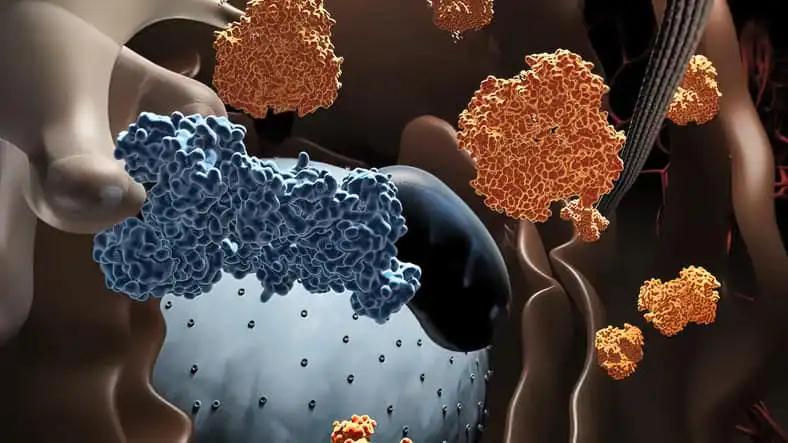KEY TAKEAWAYS
- The interim analysis of the phase-3 MAGNITUDE trial was conducted to study the use of NIRA+AAP as first-line therapy in mCRPC patients with and without HRR gene alterations.
- The combination prolonged median rPFS to 19.5 months compared to 10.9 months with placebo (PBO)+AAP.
- NIRA+AAP showed significant clinical advantages in TSP, TCC, and OS, particularly within the BRCA subgroup.
The initial assessment of the phase-3 MAGNITUDE trial showed that the combination of niraparib with abiraterone acetate and prednisone (NIRA+AAP) led to enhancements in clinical results for patients (pts) with metastatic castration-resistant prostate cancer (mCRPC) and homologous recombination repair (HRR) gene alterations encompassing improvements in radiographic progression-free survival (rPFS).
This interim analysis (IA2) conducted as a follow-up to the MAGNITUDE study presented findings related to secondary endpoints and outcomes reported by pts (PROs).
During the predetermined IA2 evaluation, involving a total of 423 pts with mCRPC and HRR gene alterations, secondary endpoints such as time to cytotoxic chemotherapy (TCC), time to symptomatic progression (TSP), and overall survival (OS) were evaluated. Additionally, updates were made to the primary rPFS and PROs, including pain intensity, specifically within the HRR alterations (HRR+) subgroup. A sensitivity analysis was also carried out for pts within the subgroup with breast cancer gene (BRCA) alterations. The pts were randomized in a 1:1 ratio to receive either NIRA+AAP (n=212) or placebo (PBO) with AAP (n=211).
Within the HRR+ cohort, the updated description of rPFS outcomes during IA2 remained in line with the primary analysis. NIRA+AAP prolonged the median rPFS to 19.5 months, compared to 10.9 months with PBO+AAP, specifically in the BRCA subgroup. The HRR+ cohort displayed a statistically significant advantage in TSP with NIRA+AAP, a benefit that consistently extended to the BRCA subgroup. The HRR+ cohort and the BRCA subgroup consistently improved TCC with NIRA+AAP.
In the BRCA subgroup, NIRA+AAP showed improved OS in both the primary stratified and multivariate analysis (MVA), adjusting for disparities in key baseline characteristics. NIRA+AAP also led to delayed onset of worst pain intensity (Hazard Ratio: 0.70; 95% Confidence Interval: 0.44, 1.12; nominal P=0.1338) and pain interference (Hazard Ratio: 0.67; 95% Confidence Interval: 0.40, 1.12; nominal P=0.1275) compared to PBO+AAP within the BRCA subgroup. The evaluation did not observe any new safety signals, and the safety profile during IA2 remained consistent with the primary analysis.
The study confirmed that the updated rPFS outcomes during IA2 were consistent with the primary analysis. After a median follow-up of 26.8 months, a significant clinical advantage was evident regarding TSP and TCC. Enhanced OS was observed within the BRCA subgroup. Furthermore, the study reported a delayed time to worst pain intensity and pain interference. These findings support the use of NIRA+AAP among pts with mCRPC and BRCA alterations or other HRR gene alterations.
Source: https://ascopubs.org/doi/abs/10.1200/JCO.2022.40.6_suppl.012
Clinical Trial: https://classic.clinicaltrials.gov/ct2/show/NCT03748641
Kim N. Chi, Dana E. Rathkopf, Matthew Raymond Smith, Eleni Efstathiou, Gerhardt Attard, David Olmos, Ji Youl Lee, Eric Jay Small, Andrea Juliana Gomes, Guilhem Roubaud, Marniza Saad, Bogdan Zurawski, Valerii Sakalo, Gary Mason, Adam del Corral, George C. Wang, Daphne Wu, Brooke Diorio, Angela Mennicke Lopez- Gitlitz, and Shahneen Kaur Sandhu Journal of Clinical Oncology 2022 40:6_suppl, 12-12, DOI: 10.1200/JCO.2022.40.6_suppl.012.



